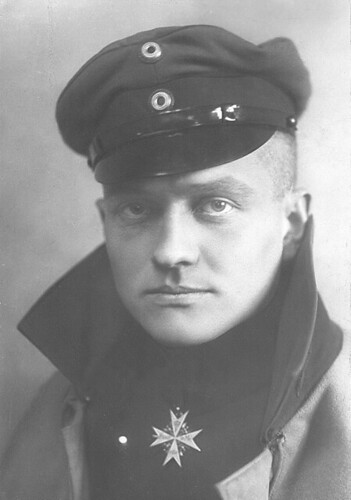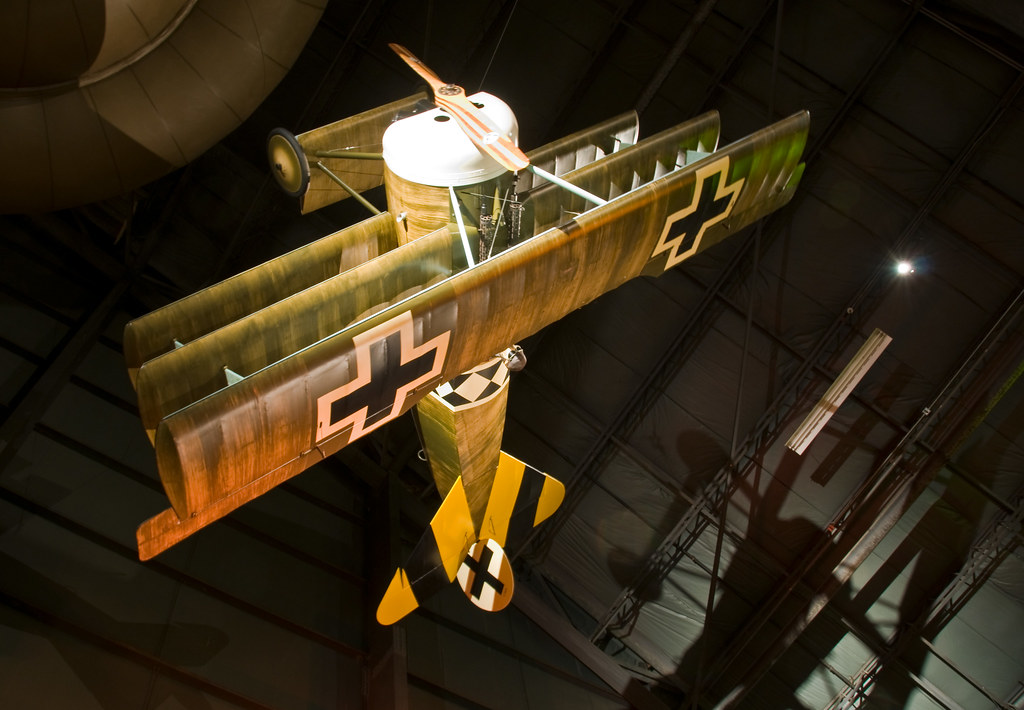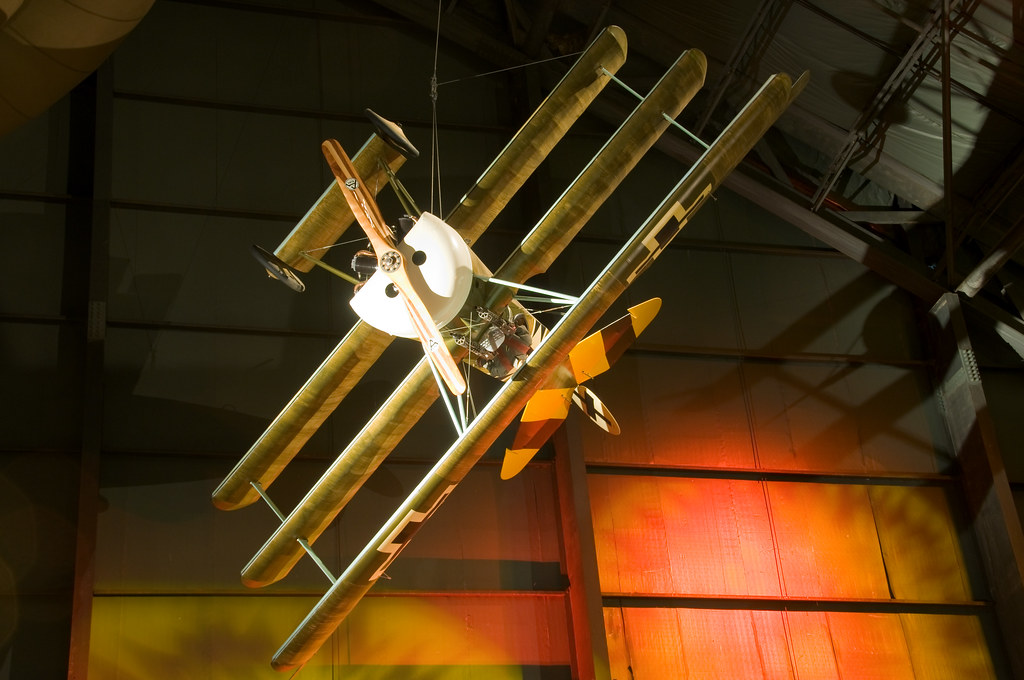

Replica of Freiherr von Richthofen's red Fokker Dreidecker I photographed by Oliver Thiele.
In January 1917, after his 16th confirmed kill, Richthofen received the Pour le Mérite ("The Blue Max"), the highest military honour in Germany at the time. That same month, he assumed command of Jasta 11, which ultimately included some of the elite German pilots, many of whom he trained himself. Several in turn subsequently became leaders of their own squadrons. Ernst Udet (later Colonel-General Udet) was a member of Richthofen's group. As a practical aid to easy identification in the melee of air combat, Jasta 11's aircraft soon adopted red colourations with various individual markings, with some of Richthofen's own aircraft painted entirely red. This practice soon had its use in German propaganda, even the RFC aircrew dubbing Richthofen "Le Petit Rouge."
Richthofen led his new unit to unparalleled success, peaking during "Bloody April" 1917. In that month alone, he downed 22 British aircraft, raising his official tally to 52. By June, he was the commander of the first of the new larger Jagdgeschwader (wing) formations, leading Jagdgeschwader 1, composed of Jastas 4, 6, 10 and 11. These were highly-mobile, combined tactical units that could be sent at short notice to different parts of the front as required. In this way, JG1 became "The Flying Circus", its name coming both from the unit's mobility (including the use of tents) and its brightly coloured aircraft. By the end of April, the "Flying Circus" also became known as the "Richthofen Circus." Richthofen was a brilliant tactician, building on Boelcke's tactics. But unlike Boelcke, he led by example and force of will rather than by inspiration. He was often described as distant, unemotional, and rather humourless, though some colleagues contend otherwise. Richthofen was killed just after 11 a.m. on 21 April 1918, while flying over Morlancourt Ridge, near the Somme River.


The Fokker Dreidecker I as it hangs upside down from the ceiling at the museum in Dayton, emphasizing the high maneuverability of the triplane.

No comments:
Post a Comment